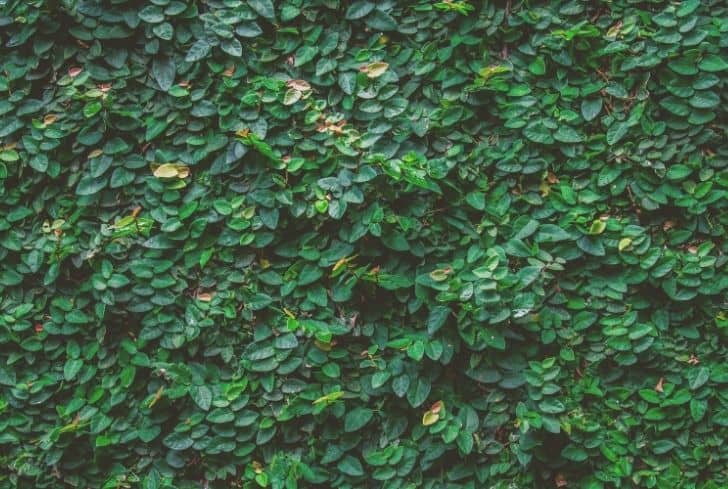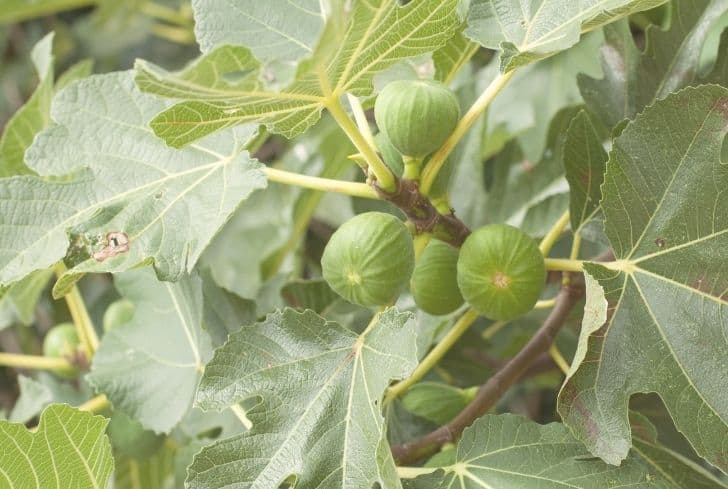Fig trees belong to a unique tree species that usually produces around two to three fruit crops annually. The defining element of these trees is that they are entirely drought-tolerant and come with multiple vital qualities.
Originating from the Ficus genus, this tree was known to be first cultivated in the Eastern Mediterranean parts and certain parts of Western Asia almost 5,000 years back.
Fig trees can assume a height of up to a whopping 15 to 30 feet, and although they do not have any specific care requirements, you need to prune them from time to time. If you plan to cultivate the fig tree in a small container, you might also want to restrict its height.
Now, with that being said, you might be wondering about the different types of fig trees there is. As with any other tree species, fig trees can be classified into multiple types depending on their species, care requirements, and additional criteria.
In this article, we will discuss the 13 different types of fig trees that can be conveniently grown in your homes.
Types of Fig Trees
Some of the common fig trees that you can consider growing in your home include:
1. Common Fig Tree

As you would probably guess from the name, this is probably the most common fig tree variant. It is incredibly popular in the US, where many grow it in institutions and home gardens.
The unique feature of these fig trees lies in the fact that they do not have any proper seeds. Owing to this fact, they do not require to be pollinated either, so you can practically grow them anywhere you deem fit.
Figs growing from the Common fig tree can withstand insect attacks. They are also unsusceptible to rotting as they do not feature any opening allowing rainwater, which could affect the fruit, to penetrate. The Common fig is probably the only species of fig that can stay consistently good for an extensive period.
2. Celeste Fig Tree
With an ability to withstand temperatures of 15 degrees F (or less), this is yet another fig tree best known for its solid and hardy appeal. It also is a variant of the Common fig and is found widely across the Southeastern parts of the US.
The Celeste Fig produces fruits as well as small flowers. The fruits are extremely rich in sugar content and are, therefore, known as sweet figs. They usually start out green, eventually assuming a brown, purplish hue as they ripen.
If you find ripe fruit in your Celeste Fig tree, consider removing it immediately and, if possible, eat it the very day. If you have to store it, ensure it’s kept in a cool and dry spot.
The Celeste Fig is an excellent option if you plan to cultivate your own figs, and that’s because it is entirely self-fertile. In other words, this type doesn’t require cross-pollination either, meaning cultivars will only require a single fig tree instead of two different trees to produce fruit.
The tree assumes a medium size and can grow up to 10 feet in height. However, it will have a lesser height if you keep it in a pot or container. The Celeste fig’s foliage is extensive and lobed, and every individual leaf measures up to 1 foot in length.
3. Kadota Fig Tree
If you plan to grow a lofty and incredibly tall fig tree, the Kadota Fig may be your answer. Growing up to 30 feet, this plant is best known for its beautiful skin with a yellowish-green tinge and a purplish pulp.
This tree is also known for its preserves. The figs are immensely attractive, seedless, and assume a light golden hue when you dry them. The tree may be adaptable if you consider sheltering it, tolerates cold, and thrive best in hardiness zones 5 and 6.
4. Chicago Hardy Tree
Buy From Amazon
While the Chicago Hardy is not as popular as the Common fig or the Celeste, they are still considered one of the hardiest fig trees ever.
The branches of this tree can tolerate low temperatures of 10 degrees Fahrenheit, and its roots can withstand temperatures between 10 to 20 degrees Fahrenheit.
While the plant may die during the colder months, if you insulate the roots with a heavy layer of mulch, they will recover during spring.
Chicago Hardies are known to produce fruits twice on an annual basis. They usually bear small crops during the spring months and the main crops during the early fall months.
The fruits are best known for their sweetness and soft skin. The Chicago hardy can grow up to 15 plants and is an excellent specimen plant for your garden.
5. Purple Genca Fig Tree
This tree usually has moderate growth and can successfully grow up to 13 feet. They produce plenty of foliage and fruits, known as Black Genoa figs or the Black Spanish figs.
The Purple Genca usually features a dark purplish hue and a massive size. These plants are also known for their sweet and reddish flesh and are self-fertilizing, meaning you can eat them dried or fresh.
And the best part: you can also make jam with them. In fact, Purple Gencas are a common favorite for both commercial cultivars and home garden enthusiasts.
6. Smyrna Fig Tree
Usually pollinated by the caprifigs, the Smyrna bears female flowers. Based on its geographical location, it is also interchangeably known as the Calimyrna fig tree. The species is known for its soft and delicious-tasting figs with high fiber content.
While consuming these figs fresh, you will notice their striking greenish-yellow hue. But when dried, they will immediately assume a light golden hue. At this stage, they also taste like nuts.
7. Weeping Fig Tree

Usually grown as a houseplant, the weeping fig is primarily found in areas with a mild climate. Native to the Asian and Australian regions, you can also grow it outdoors if your location has a cool and temperate climate.
The Weeping fig is known to be ever-green, meaning you can grow it as a shrub or as a tree. It has slender, drooping branches often decked with greenish leaves and pointed edges.
During summer, this tree produces creamy and yellowish blooms that eventually become tiny red figs. But that frequently happens when grown outdoors and will happen at least twice a year. Indoors, these trees will rarely bear any fruit of flower.
In their native areas, these figs can assume a lofty height of up to 50 feet. However, when cultivated in home gardens, they are significantly smaller.
8. San Pedro Fig Tree
These figs bear two very unique kinds of crops every year. The first thrives on leafless, mature wood that doesn’t require any pollination. They are widely known as the Breba crop. The second on our list grows on New wood and requires male flowers for a round of successful pollination.
Unlike the first crop, which usually comes during summer, the second one is produced during the latter half of the year and requires constant pollination. If it isn’t pollinated, the fruit naturally falls from the tree.
9. Caprifig Tree

Unlike many other fig trees featured on this list, the Caprifig produces no edible fruit. Instead, it primarily produces the male figs used to pollinate the female counterparts.
Caprifigs are native to South European parts and South Western parts of Asia. They feature thick skin, a body shaped like a pear, and plenty of tiny flowers that appear like small fruits. Caprifigs aren’t juicy and are also known to be semi-hollow. The inedible fruits of the tree are ripened thrice a year.
10. Brown Fig Tree
Assuming a height of up to 25 feet, the Brown fig tree is best known for its extensive (almost invasive) spread. The tree bears excellent-tasting fruits and stunningly beautiful foliage.
Unlike many other common variants of fig trees, this one doesn’t bloom. The fruits of these trees have a dark purplish skin which is usually sold fresh. While growing this tree at home, you will likely witness fruits during the late summer and spring months.
11. Creeping Fig Tree
Growing in hardiness zones 9 to 15, the Creeping fig is best known as a climbing plant that tends to cover up everything it comes across. Also popular as the Topical Ivy, this plant sticks to walls, fences, and even the ground with its hardy aerial rootlets. These rootlets are also known to grasp almost anything they end up encountering.
Owing to their vigorous growth, these figs may be invasive if you allow them to thrive without getting them pruned. You should also closely watch this plant and prune it at least once a year to ensure it doesn’t end up covering the plants or trees nearby.
12. Alma Fig Tree
With deliciously rich fruits, the Alma Fig Tree is another excellent tree primarily found in Mexican regions. The tree may not appear appealing initially, but the fruits make up for it all!
This tree is known to be sensitive to snow and frost. So, if you plan to grow it outdoors, consider moving it indoors during the notably colder months. Its figs are usually eaten raw, but you can also make jams from them. The fruit is moderately sized with a yellowish hue and tiny seeds.
13. Adriatic Fig Tree
Primarily found in the Mediterranean regions, these figs feature a light-greened hue and pinkish flesh, especially when you get them fresh. Since their sugar content is super high, the Adriatic figs directly grown on trees are later dried to prepare fig bars or pastes.
The trees can self-pollinate and can withstand almost all weather conditions. The fruit usually ripens between June and August.
Well, these were some of the most popular fig trees out there. If you plan to plant either at home, consider cultivating them in the accurate hardiness zone (ideally 8 or lower).
If you live in an area where the temperature gets too cold during winter, consider planting the tree in a container and storing it inside. Otherwise, you can plant the tree outdoors during the early months of Spring or late fall.
References:














